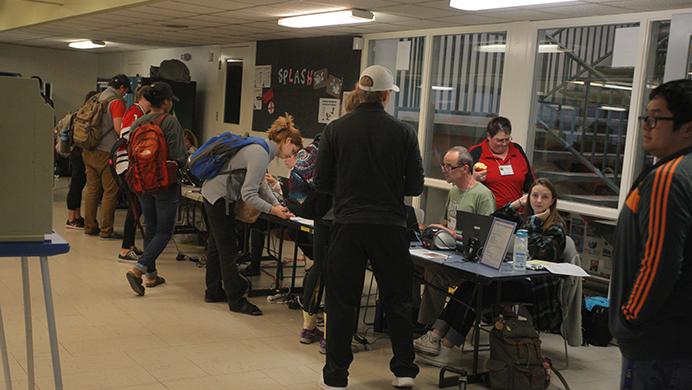By Stephen Schrichfield
Unless you’ve been lost in the Himalayas since November, the phrase “white working-class voter” has probably been forced into your vocabulary whenever attempting to make sense of the 2016 presidential election. From progressive purists to right-wing Trump populists, the term is used all over the political arena. The reality is white working class voters aren’t necessarily the only factor that lead to Trump’s victory.
The Washington Post published an analysis last week that highlights this notion. While it’s easy to imagine Trump’s base to be a mob of angry 45-year-old men who blame their unemployment on globalism and the so-called Washington elites, this imagery is simply untrue. According to the analysis, only a third of Trump supporters have incomes around $50,000 with another third bringing in anywhere between $50,000 to $100,000, and the final third achieving $100,000 and above. To note, this research only accounts for white voters.
What about education? Clearly this shows a gap in the income of Trump voters, right?
I found this conclusion most interesting. The same article states, “To look at it another way, among white people without college degrees who voted for Trump, nearly 60 percent were in the top half of the income distribution. In fact, one in five white Trump voters without a college degree had a household income over $100,000.” Education and income didn’t make much of a difference as Trump voters without college degrees still achieved a sizable income. In this case, education level doesn’t always seem to correlate with income achievement.
The assumptions made about Trump voters being “working class” also don’t hold true. Of the voters who actually would be financially classified as working class, their reasoning for voting for Trump was much different from the supposed economic plight often presented by the media.
Research conducted by the Public Religion Research Institute and The Atlantic established that white working-class voters who worried about their finances were more likely to favor Hillary Clinton, but when the group was asked about cultural change, they preferred Trump. Cultural change, or the anxiety surrounding foreign influence and American identity, was crucial in their picking of a president. Almost two-thirds of these voters found this to be imperative. While everyday political conversations get hung up on those who voted for Trump, the reason they choose him in the first place is often ignored.
Political pundits will argue until hell freezes over if Trump was a champion of blue-collar America, but in reality, Trump voters come in all shapes and sizes. White working-class voters in crucial swing states do exist and did, in fact, aid him, but they didn’t single-handedly give the election to Trump. Politics aside, these are a group of people who are struggling.
What’s sometimes sadly overlooked is the opioid epidemic that ravaged these working-class small towns or the high levels of unemployment in their communities. I believe Trump’s budget and the AHCA will despair these communities, and his empty promises will leave them feeling forgotten once again. Let this be a talking point instead of using the term “white working-class voter” as some sort of scapegoat for the 2016 presidential election results.
When you get down to the numbers, the election’s GOP breakdown isn’t much different from the past. Suburban country-club Republicans looking for a tax break turned to Trump as well as disgruntled working-class folks searching for a voice.
Only when an accurate representation of voters is presented can we move toward a more honest analysis of the election and its outcomes. From here, we can draw inferences in whatever ideological fashion we’d like, but the basis of our claims must be rooted in fact.



